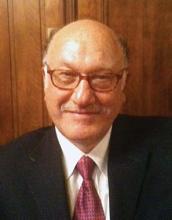Clinicians have known for quite some time that that hypnosis is an important adjunctive therapy for adults. We’ve also found the technique to be a valuable tool in consultation-liaison psychiatry for treating children and adolescents. In fact, our unit has treated young patients using this tool for more than 20 years – with much success.
Take the case of a 13-year-old boy we’ll call Adam. He was referred by his primary care physician for an unexplained weight loss of about 30 pounds, as well as burning and cramps in the morning that had occurred over the course of year. His GI work-up yielded little information, except that he had some degree of gastroesophageal reflux disorder. Adam also had a mild psychiatric history as well as some significant psychosocial stressors. His current diagnosis was generalized anxiety disorder.
Adam was seen for several sessions of hypnotherapy with a psychologist, who treated him with a modified version of a standardized protocol for irritable bowel syndrome (for adults) developed by Olafur S. Palsson, Psy.D., of the University of North Carolina at Chapel Hill (Int. J. Clin. Exp. Hypn. 2006;54:51-64).
First, Adam was taught a hypnosis relaxation technique that involved introducing visualizations of coating the stomach and intestine with smooth and soothing medication. After this, we had Adam visualize dolphins attacking "knot-fish" in his stomach as well as his best of friends coming to his aid eliminating GI symptoms whenever he called for help. (We used some exercises from "The Relaxation and Stress Reduction Workbook for Kids" (Oakland, Calif.: New Harbinger Publications Inc., 2009.)
Adam responded well to the protocol. He began gaining weight, the pain subsided, and he generally felt better emotionally. We were able to resolve Adam’s symptoms without recurrence in four sessions.
Another case involved a patient we’ll call Rashik, a 6-year-old boy with trichotillomania. (He pulled out his eyelashes.) The clinician conducted deep relaxation exercises, and offered suggestions about ignoring the urge to touch his face and instead focusing on feeling relaxed around his eyes. In addition, she did some cognitive-behavioral interventions, such as prescribing the symptom once per week using a timer, helping the parents establish rewards, and so on. After teaching the youngster relaxation/hypnotic techniques, the clinician introduced a strategy that directed him to imagine and visualize the skin around his eyes relaxing and focusing on this, rather than pulling out his lashes.
Rashik improved markedly after several months of hypnotic treatment.
A third case involved a patient we’ll call Melissa, who was 12. She had suffered from chronic, unremitting back pain for 4 years after a bus accident. Medical work-up yielded little information and few solutions. The clinician surmised that because of her significant pain and some preexisting personality traits (help-rejecting style), Melissa’s progress with conventional hypnotic interventions proved limited. Ultimately, the treatment was modified, and medication and supportive psychotherapy were offered.
Intervention’s Long History
Hypnosis has been used as a treatment intervention for a variety of symptoms ever since the Austrian physician Franz Mesmer described the technique (using "magnetic influence") in the late 18th century ("Hypnosis and Hypnotherapy With Children." New York: Routledge, 2011.)
As we know, children tend to be more easily hypnotized than adults, and some speculate that the method responds to their general developmental needs "by addressing their ability for fantasy and imagination" (Clin. Child Psychol. Psychiatry 2008;13:377-93). The earliest work with children and hypnosis in the United States began in the late 19th century, but waned somewhat until the 1960s. Over the last quarter century, hypnosis has been used in a broad range of pediatric clinical settings.
In child and adolescent psychiatry and in pediatric consultation/liaison psych settings, hypnotic interventions have been employed as either the primary or secondary treatment for a variety of problems presenting to clinicians, including acute or chronic pain; conversion disorders and symptoms; habits such as nail biting and finger sucking; tics; nausea; headache (including migraine); needle phobia; enuresis; performance anxiety; sleepwalking; trichotillomania; and others.
Hypnotic work with children and adolescents also has been used adjunctively in treating numerous disorders, including asthma, conversion disorders, and overweight/eating disorders. Hypnotic techniques have shown to be extremely helpful with preparation for and actual medical examinations, as well as procedures in children and adolescents. These techniques increasingly have been used by consultation-liaison child psychiatrists, psychologists, and child life specialists in inpatient and outpatient hospital settings.
Developmental Issues
On the issue of the degree of hypnotizability of children of different ages and developmental stages, early studies point to "middle childhood" (age range, 7-14 years) as the preferable age for hypnotic induction. However, studies performed with younger children using creative techniques have proved successful with preschool children as well (Pediatric Annals 1991;20:120-7). Some clinicians argue that the younger preschool children can actually be very good hypnotic subjects, as they are "in trance" much of the time and nonlinear in their thinking (which correlates with the preoperational phase in Jean Piaget’s theory of cognitive developmental staging).



